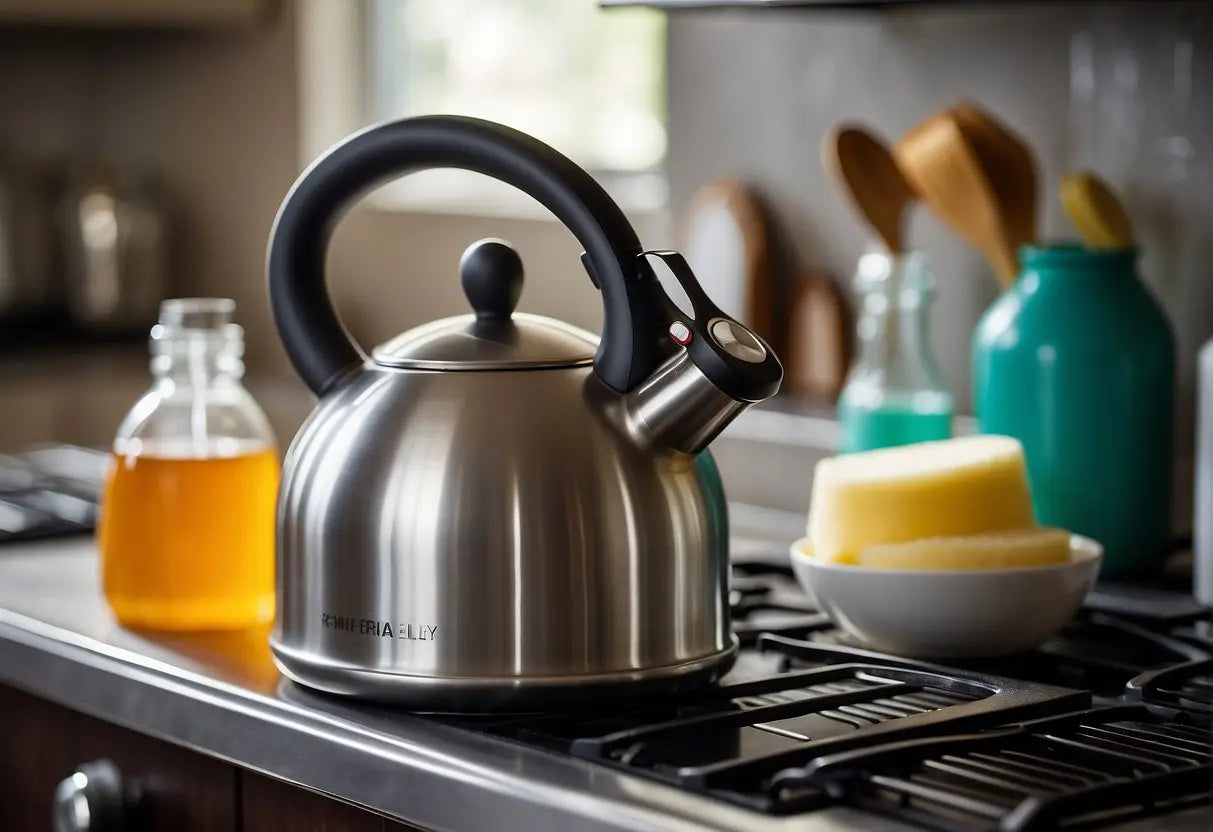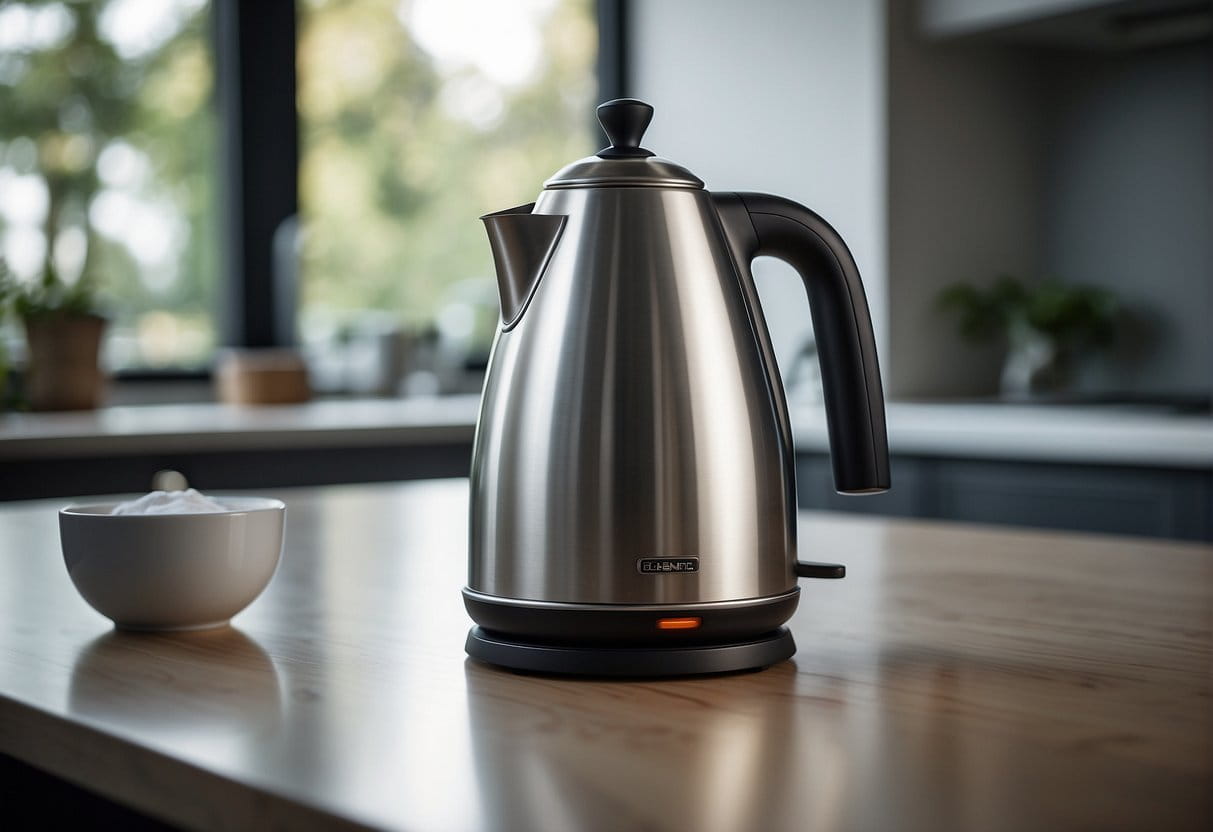How to Clean Stainless Steel Tea Kettle
Shop our Pu Erh Tea collections!
To maintain your stainless steel tea kettle's luster and functionality, regular care is crucial. Stainless steel is revered for its rust-resistance and durability, but it can develop water spots or scale buildup without proper attention.
Daily Care:
Bestsellers
- Rinse: After each use, empty any remaining water and rinse the interior with warm water.
- Dry: Wipe the kettle with a soft cloth to prevent water spots.
Weekly Maintenance:
- Inspect: Check for scale buildup or stains.
- Clean: If necessary, use a non-abrasive cleaner and a soft sponge.
Removing Scale:
- Vinegar Solution: Mix equal parts of water and white vinegar. Fill the kettle halfway and bring to a boil. Let it stand for 20 minutes, then rinse thoroughly.
- Lemon Juice: Lemon juice is a natural alternative to vinegar. Boil a mixture of water and lemon juice in the kettle, let it sit, and rinse.
Exterior Care:
- Polishing: Use a microfiber cloth and stainless steel cleaner to polish the outside.
- Avoid Scratches: Do not use abrasive materials that can scratch the surface.
Safety Reminder:
Always ensure the kettle has cooled down before cleaning. Never immerse the kettle in water if it includes an electrical component. Follow the manufacturer's instructions for specific cleaning guidelines.
By following these guidelines, you will keep your stainless steel tea kettle clean and ensure its longevity.
Daily Cleaning Routine
Maintaining your stainless steel tea kettle involves simple daily cleaning steps to preserve its appearance and functionality.
Rinsing After Each Use
Immediately after each use, empty any remaining water and rinse the interior of your kettle with warm water. Swish the water around to cover all surfaces and pour it out.
Wiping with a Damp Cloth
Take a soft, damp cloth and gently wipe the exterior of the kettle to remove fingerprints and water spots. For any stubborn residues, a little bit of dish soap can be used on the cloth. Rinse the soap off thoroughly.
Air-Drying the Kettle
Once rinsed and wiped, leave the kettle open to air-dry completely before storing it away. This helps prevent mold and scale build-up. If you need to speed up the drying process, you can dry the exterior with a towel and leave the lid off the kettle for the interior to air out.
Deep Cleaning Methods

For thorough cleaning of your stainless steel tea kettle, targeted treatments are required to tackle mineral buildup and tough stains, ensuring the kettle remains fresh and functional.
Lao Ban Zhang
Vinegar Solution for Mineral Deposits
To remove mineral deposits, create a mixture of equal parts water and white vinegar. Fill the kettle with this solution and bring it to a boil. After boiling, allow it to sit for at least 20 minutes before emptying and rinsing thoroughly.
Baking Soda for Tough Stains
Apply a paste made of baking soda and water directly onto stains. Use a soft sponge to gently scrub the stains in a circular motion. Rinse the kettle after the stains have been removed.
Lemon Juice for Freshness
Fill the kettle with water and add a quarter cup of lemon juice. Boil the mixture, then let it sit for an hour. Lemon juice not only helps in cleaning but also leaves a refreshing scent. Rinse well afterwards.
Polishing Stainless Steel
Regular polishing of your stainless steel tea kettle will maintain its luster and prevent tarnishing. Here are two effective methods to polish stainless steel.
Olive Oil for Shine
To enhance the shine of your stainless steel kettle, apply a small amount of olive oil to a microfiber cloth.
- Rub the oil onto the surface in the direction of the grain.
- Finish by wiping off any excess with a clean cloth for a streak-free shine.
Commercial Stainless Steel Polish
For stubborn stains or to restore the kettle's original brilliance, consider using a commercial stainless steel polish.
- Apply a dollop of polish onto a microfiber cloth.
- Gently rub the surface, following the stainless steel grain.
- Buff with a fresh cloth to avoid streaks and bring out a bright, polished finish.
Preventative Maintenance
Proper care of your stainless steel tea kettle can prevent common problems like water spots and limescale buildup, ensuring its longevity and performance.
Avoiding Water Spots
After each use, empty any remaining water to prevent standing water from leaving spots or a film. Wipe the exterior with a soft, dry cloth to remove moisture. For extra protection, once a week:
- Dampen a cloth with vinegar.
- Gently rub the surface of the kettle.
- Rinse with water.
- Dry thoroughly with a clean cloth.
Regular Descaling
Depending on the hardness of your water, descale your kettle every 1-3 months to prevent mineral buildup. Here's a simple descaling method:
- Fill the kettle with an equal mix of water and white vinegar.
- Bring to a boil and let sit for 20 minutes.
- Dispose of the mixture.
- Boil plain water in the kettle and then empty it to remove any remaining vinegar taste.
Care Tips for Longevity

Maximizing the lifespan of your stainless steel tea kettle involves proper care in storage and use. Adhering to these guidelines will help maintain its condition and functionality.
Proper Storage
- Environment: Store your kettle in a dry, cool place to prevent moisture buildup, which can cause corrosion.
- Emptying: Always empty residual water after use to avoid mineral deposit accumulation.
Handling and Usage Best Practices
- Cleaning: Regularly clean your kettle with a mixture of warm water and mild detergent; using harsh chemicals can damage the stainless steel surface.
- Heating: Never heat an empty kettle, as it can cause warping or discoloration to the stainless steel.
Frequently Asked Questions
Cleaning your stainless steel tea kettle regularly will ensure its longevity and maintain its appearance. Below, find targeted advice to address specific concerns you might encounter with your kettle.
What are the best methods to remove limescale from the inside of a stainless steel kettle?
For limescale removal, fill the kettle with a mixture of half water and half white vinegar and let it sit for an hour. Afterward, boil the solution, let it cool, then rinse thoroughly.
How can I clean the outside of a stainless steel tea kettle to maintain its shine?
To clean the exterior, wipe down your kettle with a microfiber cloth dipped in a solution of warm water and mild dish soap. For extra shine, use a stainless steel cleaner according to the product's instructions.
Is it safe to use vinegar to descale a stainless steel tea kettle, and if so, how?
Yes, it's safe to use vinegar. Mix equal parts of white vinegar and water in the kettle, bring to a boil, then switch it off and allow it to sit for at least 20 minutes before rinsing.
Can baking soda be used to clean a stainless steel tea kettle, and what is the process?
Absolutely, baking soda is effective. Create a paste with baking soda and water, apply it to the interior, and let it sit for a few minutes. Scrub gently then rinse thoroughly with clean water.
What should be done to effectively clean the glass portion of a stainless steel tea kettle?
If your kettle has a glass portion, clean it with a soft sponge and a solution of vinegar and water to remove stains and residues. Avoid abrasive materials that can scratch the glass.
What commercial cleaners are recommended for stainless steel kettles, and are they effective?
Commercial cleaners that specify they are suitable for stainless steel can be both safe and effective. Ensure you follow the manufacturer's instructions for application and removal to prevent damage to the kettle's surface.
← Older post Newer post →











